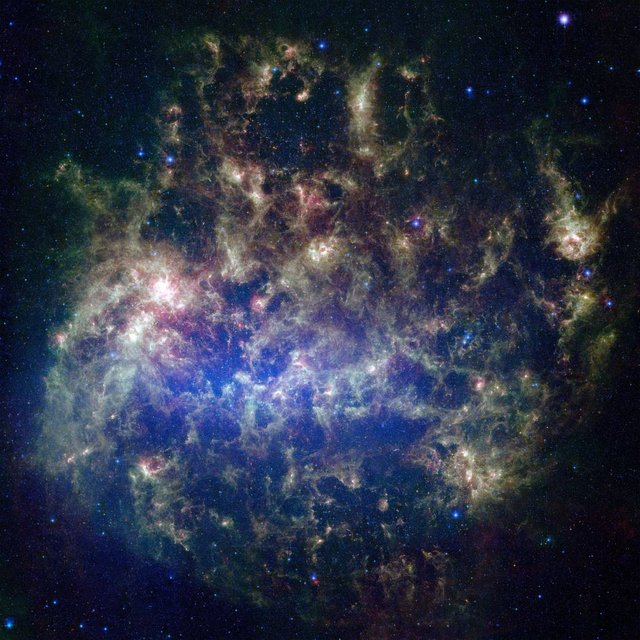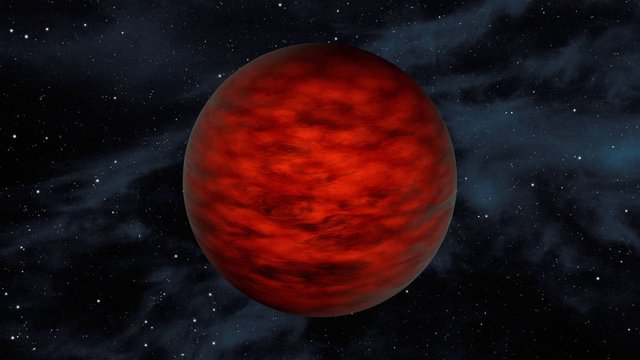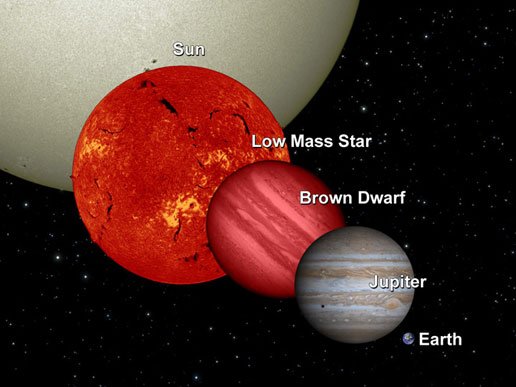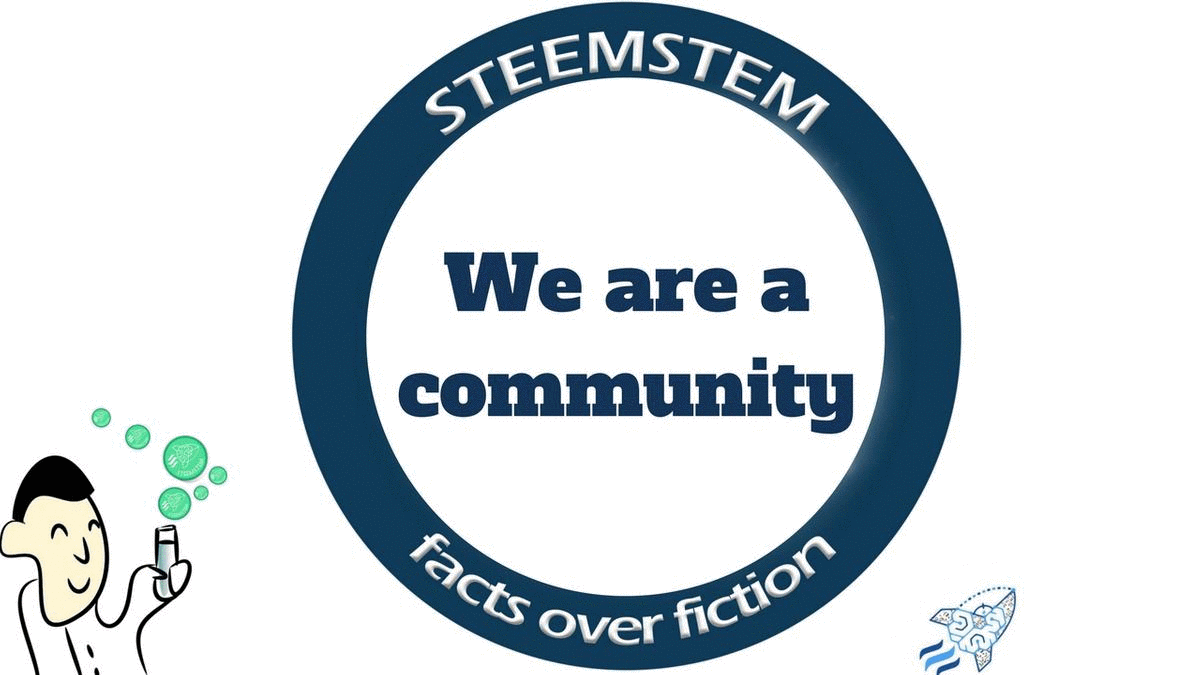Planet Formation & The Evolution of the Solar System : Experimental !!
Hello wonderful people on #Steemit! A very warm greetings to one and all. Hope you all are doing well in your life! In today's article, we're going to be discussing about planets. Specifically, we're going to be talking about why is it that planets tend to look so different and how they actually advance in terms of size and mass as you add more and more mass to a certain object? In other words we're going to basically evolve a planet from a tiny rock similar to Mercury to something that might even resemble a star.

Hope you people will read my article and provide your valuable suggestions and thoughts by commenting below. So, without any further delay let us start the exploration!!


So, the goal today is for us to actually try to understand how planets evolve as you add more mass to them. We're going to start with a small object. We just started a new simulation in Universe Sandbox and create an object that's going to be even smaller than Mercury. It's going to be a terrestrial planet and here is our tiny rocky planet very similar or even smaller than Mercury. As a matter of fact if I were to place Earth here. Earth will be dramatically larger. So, this is possibly even smaller than our own moon and as you add more and more mass to it and I could either do this by actually physically launching objects into it and making it more massive that way which of course looks pretty. But will probably take a lot more time or what I could do is just go in here and start adding mass this way.
So, we're going to grow it to a size of a very large terrestrial planet. We're actually going to look at the size of Earth here and as a matter of fact you'll see that as the mass increases here the actual growth is relatively linear. So, there's actually a kind of a relationship between density, mass, and size here that is very easy to establish and very easy to identify that is why when we look at certain exoplanets out there; we can quite easily guesstimate if it's a terrestrial planet or if it's a gas giant or more specifically even take a look at things like its mass and its density and knowing its density we can predict what's inside the planet.

This has been done several times and so for rocky planets it's actually not very challenging and something that we've done many times and so this will actually go on for quite a while. But as we start reaching several masses of Earth; this is what we're going to get in a bit of a problem or not really a problem! But something that we'll need to start considering and here's actually a more scientific representation of this particular relationship that I'm going to be kind of visual with you guys to help you understand how this works. So we are currently somewhere right there and as you can see there's a linear growth between the mass and the radius of the planet shown in the graph above until we reach that point and this is approximately may be 2 masses of Earth.

So, this is where we started creating something called volatile envelope and this is when a planet might actually turn into a Neptune like giant or not really giant. But a gas planet. So, let's jump forwards to the mass of 2 Earths and we need to make sure that the composition is relatively realistic. So, we're going to start adding a bit of water and hydrogen there and basically as the mass increases at some points this object will actually turn into a kind of a Neptune like world and so here we'll now have what would be a mini Neptune or basically a kind of a small gas giant. So, this is where things get really interesting because this is the kind of planet we don't actually have in our solar system. So, most of the studies that we have about these planets is basically based on observations of exoplanets out there in the space and all of them seem to be very different.

So, if you actually look at the graph here in the above again you will see that suddenly the mass the radius increases quite dramatically. But it's also all over the place. Some objects are not as big in terms of radius and some objects are very big in terms of radius and so there's a lot more unpredictability because of this so-called volatile envelope which refers to the idea of having this very unusual gas cloud around the planet. So, because of this the size of the planet can actually be quite dramatically different. But up until about a 100 or even 120 masses of Earth; this is where we'll have these so-called Neptunian worlds. Basically these will be possibly ice giants; possibly planets that just have slightly different composition to a typical gas giant and will have very varied size and most likely a lot of ice and a lot of things like water, methane, ammonia and a lot of other ice like particles in the inside. So, the composition here really determines the size as well as the appearance.

Now, because we don't have too many of these worlds except for of course our own Neptune as an option to explore in our solar system. We just simply don't know enough about why the variation here is so high. So let's go to the mass of about 100 masses of Earth or more specifically we actually are going to be measuring things in Jupiter masses. Here we need to reach about 0.4 Jupiter's before this is considered to be a gas giant because this is where things will start becoming a little bit more predictable. Now, if you actually look at the graph here shown just above at that point we have something called self-compression and this is where the actual radius stabilizes and the size doesn't really increase that much anymore because the mass is so high. Now, that the molecules inside the planet start getting squeezed more and more harder and harder and they actually start creating a planet that doesn't change in terms of size too much and this is actually the reason why Saturn and Jupiter are relatively similar in size even though the mass of Jupiter is like 3 times higher.

So, here the size doesn't change a lot and as a matter of fact all of the planets have discovered, all of the exoplanets have discovered that are similar to Jupiter are somewhere around the same size to maceration and the line here is almost linear. It's just decreases a little bit! But not by much. These are called Jovian worlds and is another word for Jupiter. So, these are basically worlds that are very similar to Jupiter up until about 14 masses of Jupiter. This is where things get different once again! So, we can actually keep increasing this until we reach the mass of about 14 Jupiter's and when we do that it will transform into another object and now it actually becomes another object. This is actually where we start getting a kind of a reaction on the inside where the hydrogen molecules start combining it into deuterium and they start creating heat and this heat starts radiating from the inside and our beautiful world is now known as a brown dwarf. It's technically no longer a planet; but it's also not really a star just yet!


A brown dwarf is a very unique object. There's actually quite a lot of them completely by themselves without any star flying around our galaxy and we think that there's actually more of these things than actual stars and possibly even planets. So brown dwarfs are also known as failed stars because they're not quite stars yet or as these super mega massive gas giants that actually produce heat from the inside. On the graph here we actually reach this point somewhere around in this area and even though it's called Jovian worlds these are technically now brown dwarfs and as you can see the actual radius starts decreasing here which is actually very unusual. So, the more mass you adds to a brown dwarf the more compact it becomes.

As a matter of fact as I add more and more mass to my beautiful world you'll notice that the radius doesn't really change as much one and actually decreases and you also will notice that it starts producing heat from the inside and so if I were to add something like 60 masses of Jupiter; you'll see that there is a lot of heat emanating from the inside and this world starts to emit infrared light that we can actually detect using telescopes. So, in other words it's not really a star yet! But it's already emitting very dark light. So, most of the brown dwarfs that we have found were found basically by looking at the skies and trying to identify these emissions of infrared, i.e. , basically warmth or heat. But obviously it's a dark world. So, here you would really see nothing in terms of visual light that is practically nothing unless there's a star nearby. Now, ironically though the most massive brown dwarf is actually smaller in size than an actual gas giant. Here's actually a pretty good representation of what's happening here so on average a brown dwarf would be a little bit bigger than Jupiter. But there are some gas giants that are actually a lot bigger than brown dwarfs even though their mass is significantly lower and this is because this thing actually starts compressing and decreasing its size as it gets more and more massive.

As a matter of fact we've actually discovered gas giants out there that are significantly larger in terms of radius compared to a typical brown dwarf. One that I can think of the top of my head is called Wasp 17b. This was a gas giant before it got destroyed that was basically larger in terms of radius than our brown dwarf. So, here in comparison you will see Wasp 17b is a lot bigger in radius and that's because it's known as a kind of a poofy planet. Basically, a planet that has very little density and not as much mass as even Jupiter. But it did create this very beautiful ring around our brown dwarf. So, that's the brown dwarf here and as you can see as we progress down the line and increase massive and further it reaches a point there where it starts burning hydrogen. Now, usually this occurs at approximately 8% of the mass of our own Sun. So, to reach this we need to switch back here and increase the mass to about eight masses of the Sun. This has now become what would be a red dwarf as shown below. A very small star that will now actually once again start increasing in size quite linearly. So, with stars as I increase their mass they're actually are going to start changing size linearly as well.
Although, it doesn't really look like I'm doing this really fast. But it is absolutely increasing in size as you can see and at some point is going to reach size of our Sun and it's good to start becoming larger and larger and become a relatively large; but somewhat unstable star. So, in terms of mass and radius relationship this is kind of how it works with planets and I guess with stars as well and we're going to try to reach the size here until our star basically goes supernova and actually that’s all I wanted to discuss with you in this article!
I wanted to explore the relationship between mass and radius and give you an idea of how planets change with radius and with mass and basically identify those specific classifications such as rocky planet, Neptunian world, Jovian world and brown dwarf and now we had a star that probably changed to a supernova sometime later because it was already looking kind of unstable and too bright. It was also decreasing in size because it's density was now increasing quite dramatically and here is that supernova. A road that started as a tiny planet has now explored and created this beautiful dust cloud that is going to may be create new planets and new stars in millions of years!

So, that's all I wanted to discuss about in this article and hopefully we've learnt a little bit more about how planets evolved from a tiny rock similar to Mercury to something that might even resemble a star. Thank you so much for reading this article guys and if you've enjoyed reading the information in this article, don't forget to just Resteem for those who enjoys reading space articles and wants to learn more through the information provided here!!

STEEMSTEM
SteemSTEM is a community-driven project that now runs on Steem for more than 1.5 year. They seek to build a community of science lovers and to make the Steem blockchain a better place for Science Technology Engineering and Mathematics (STEM).

More information can be found on the @steemstem blog, on the discord server and in the last project report. Please also have a look on this post for what concerns the building of our community.
I think you have encouraged me to go and have a look at University Sandbox! Thanks for posting this @star-vc :)
Hi @terrylovejoy! Thanks for the appreciation! Yes, ofcourse you can check out Universe Sandbox. It is quite very educative software. :)
Good research work you've put up here. I've always loved geography, and I love this.
So are there any long term effect to these planets when they increase mass?
Hi @real2josh! Thanks for taking out your valuable time and commenting.
As per the research work carried out till date which I have mentioned in the bottom of the article that the last phase on continuously adding mass to it results in the turning of tiny planet explode and creates the beautiful dust cloud that is going to may be create new planets and new stars in millions of years and the cycle may be continuing! :)